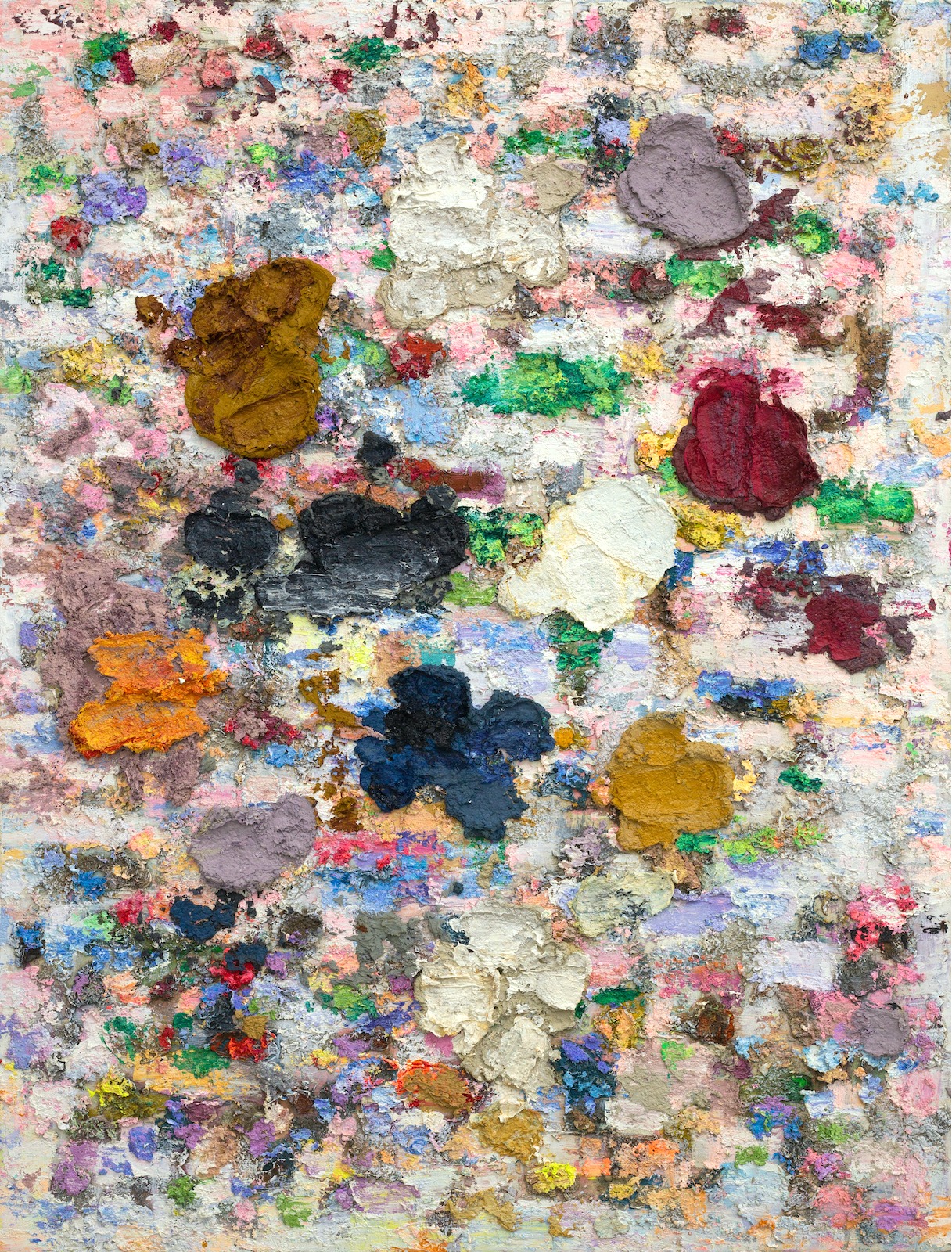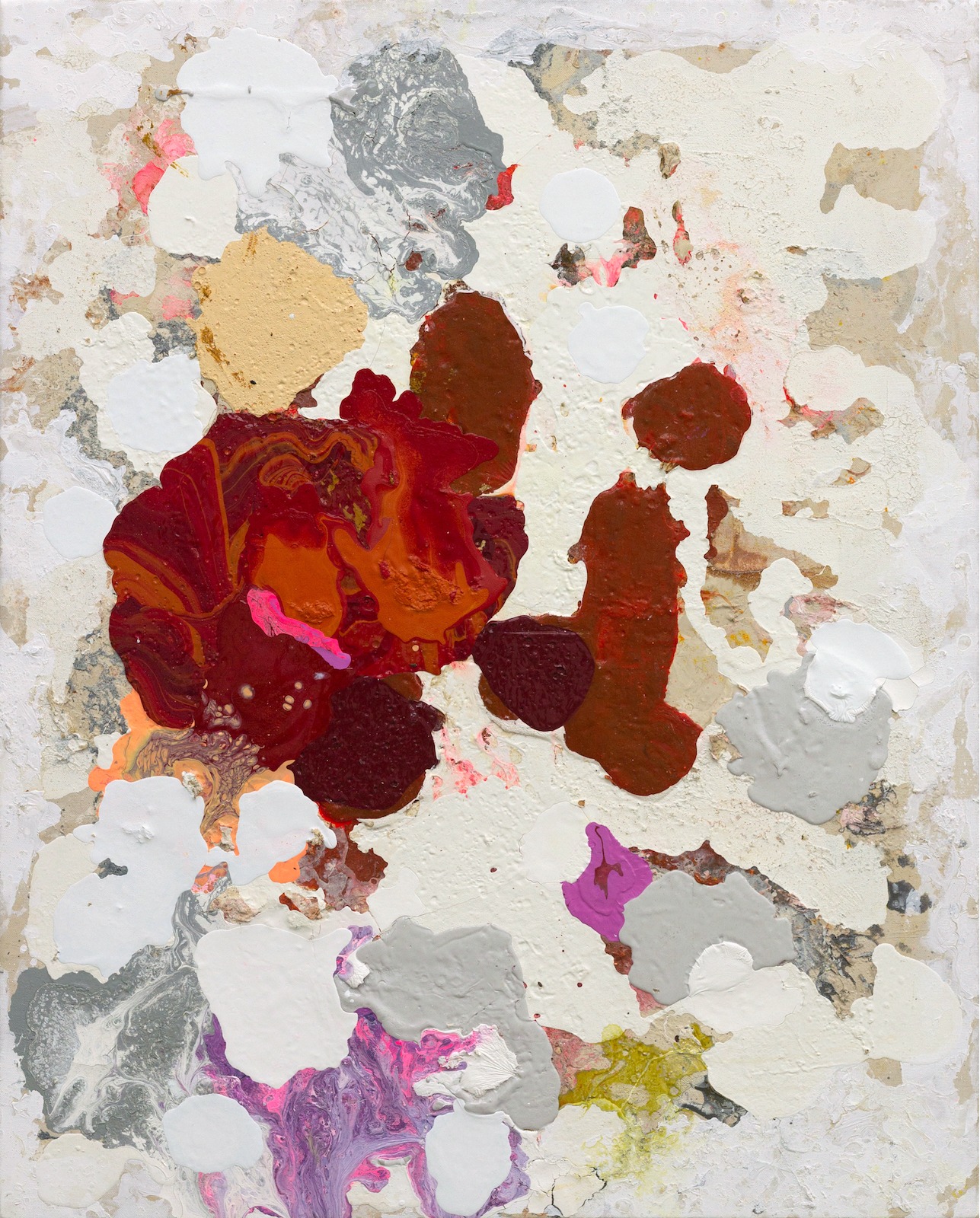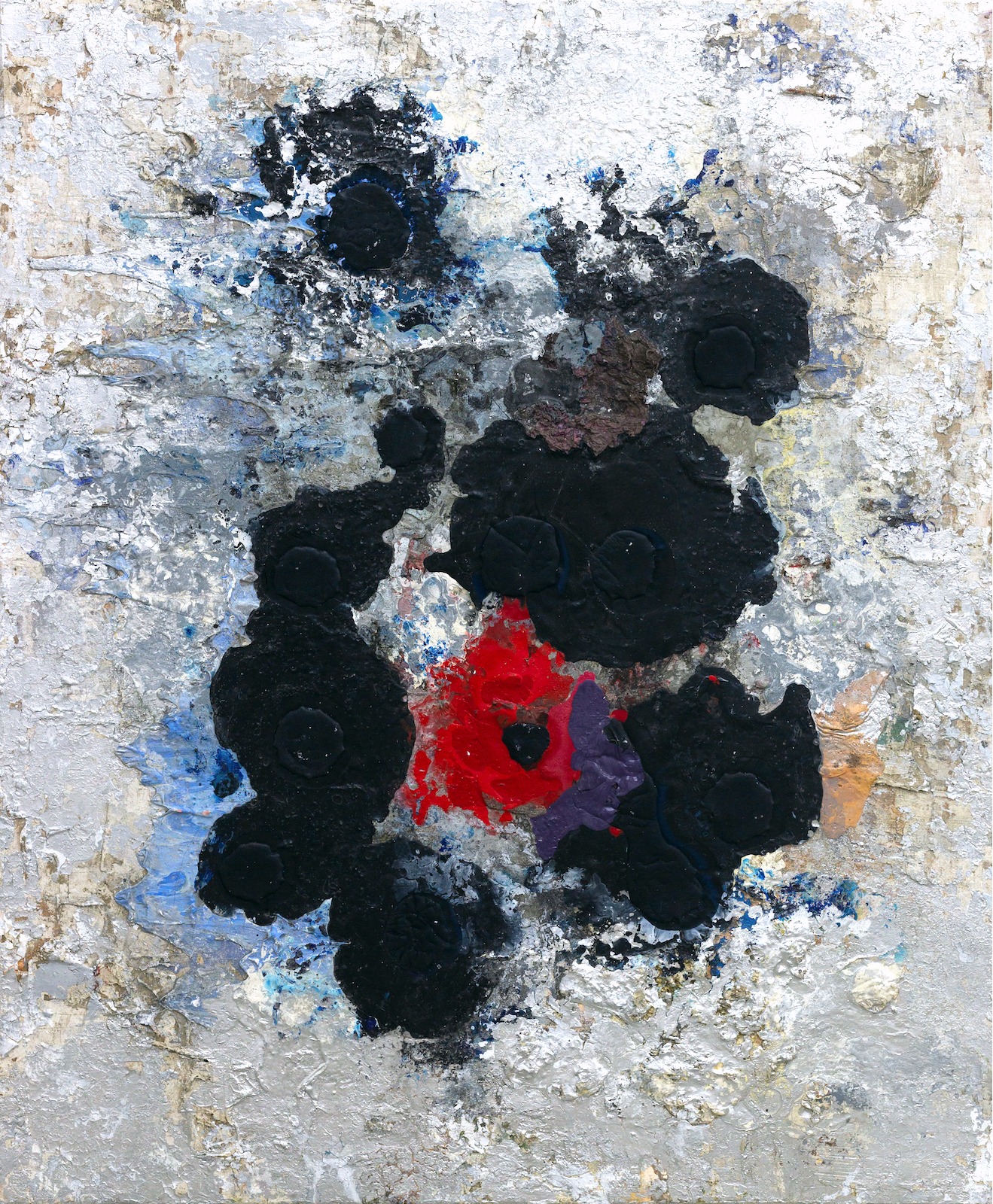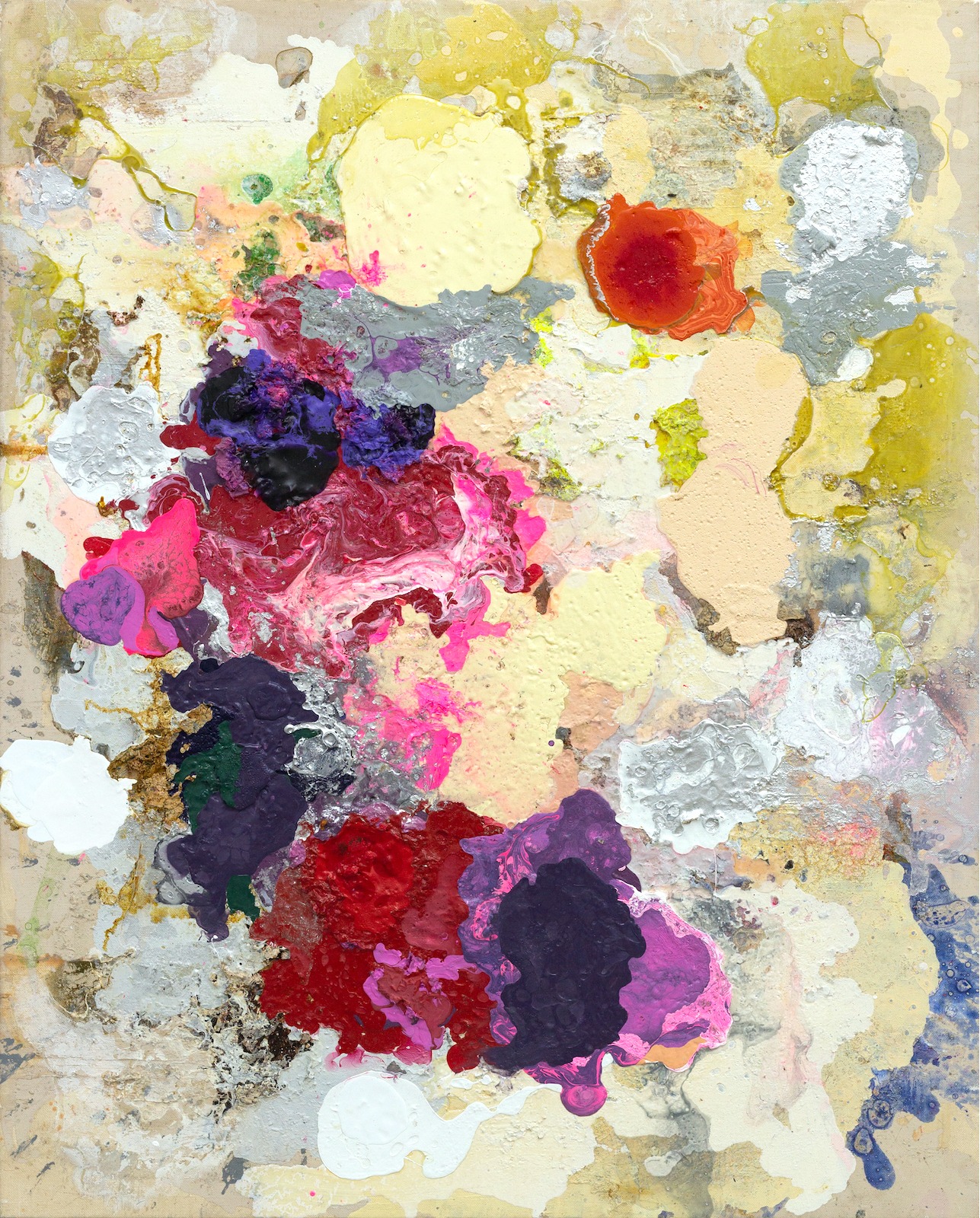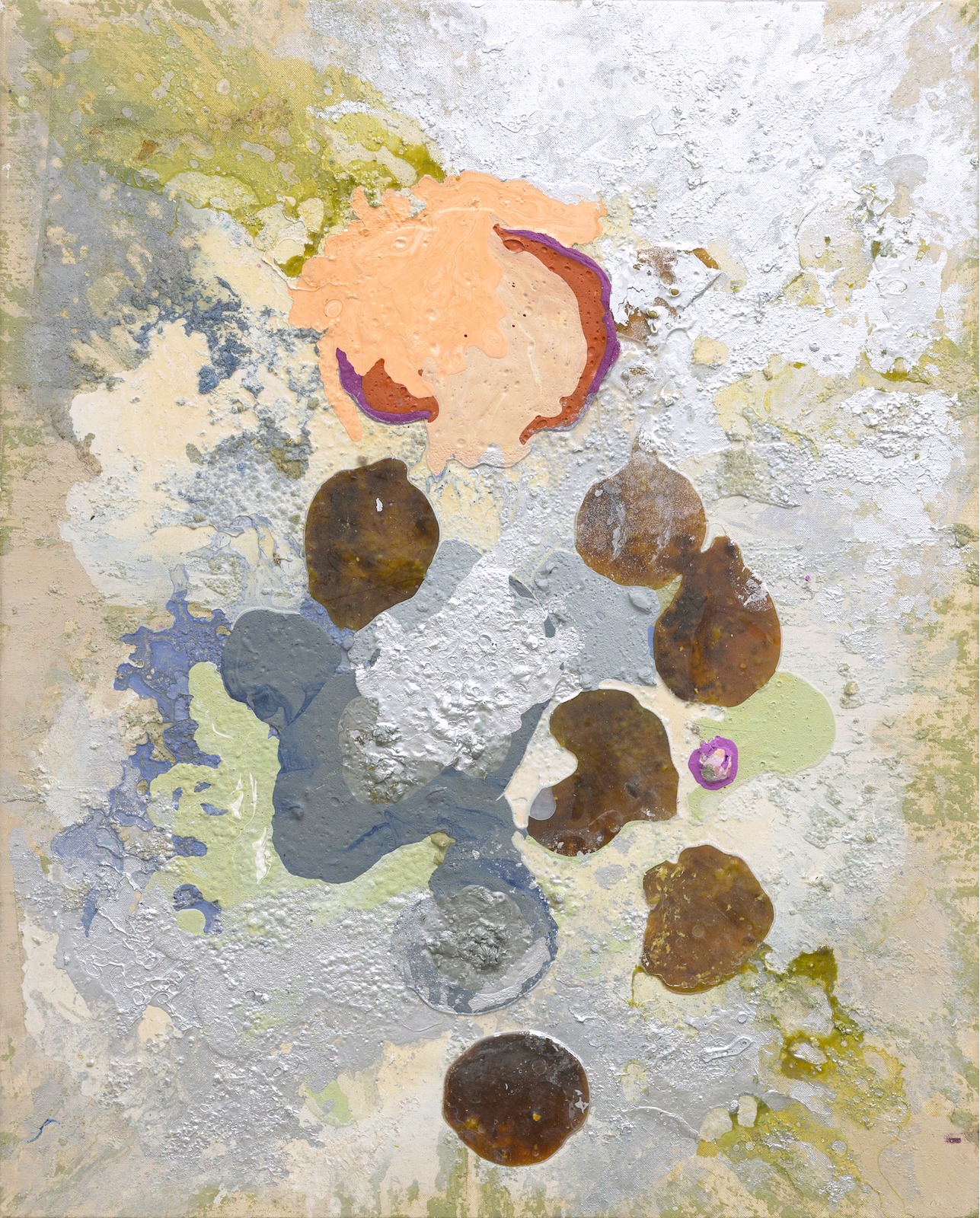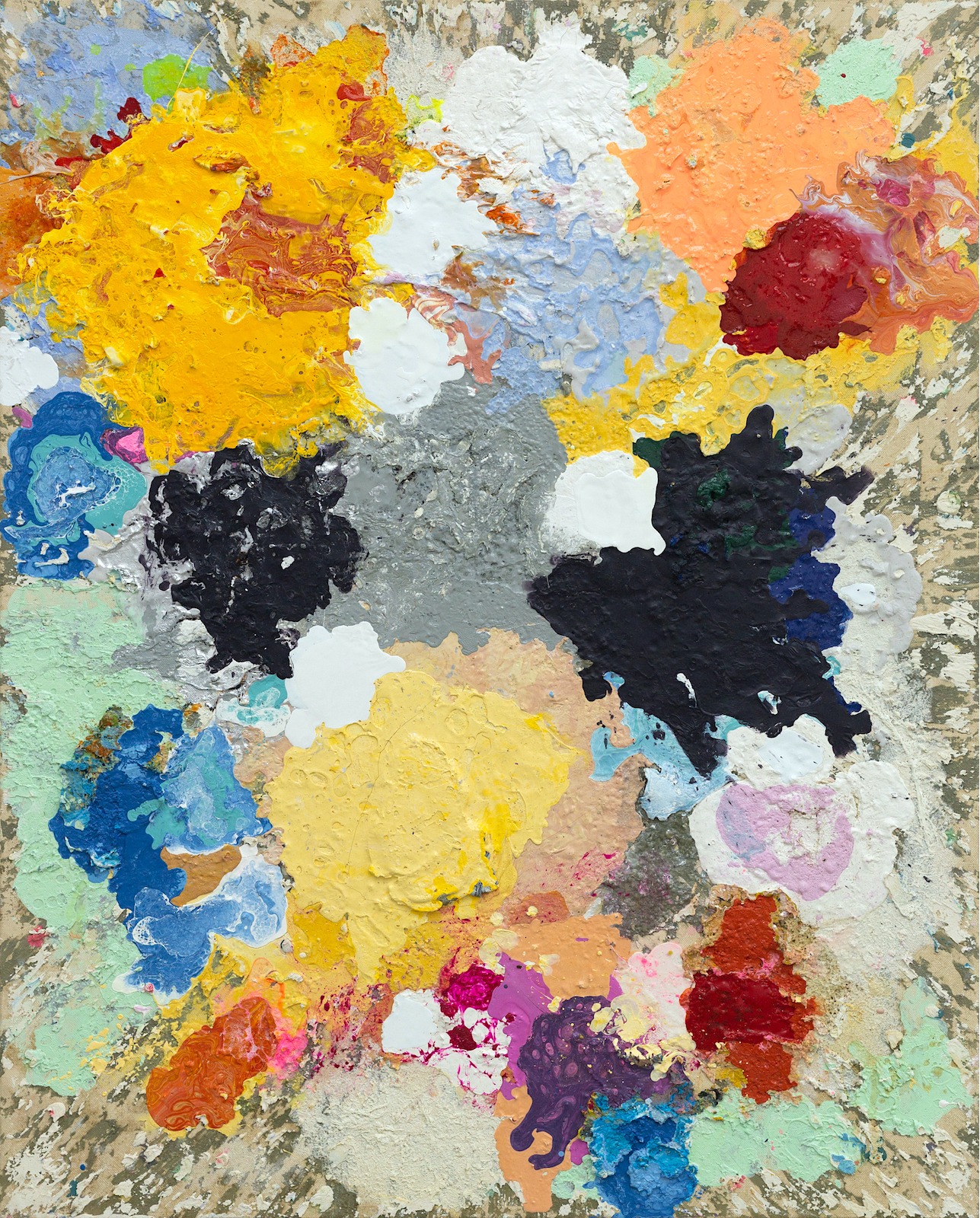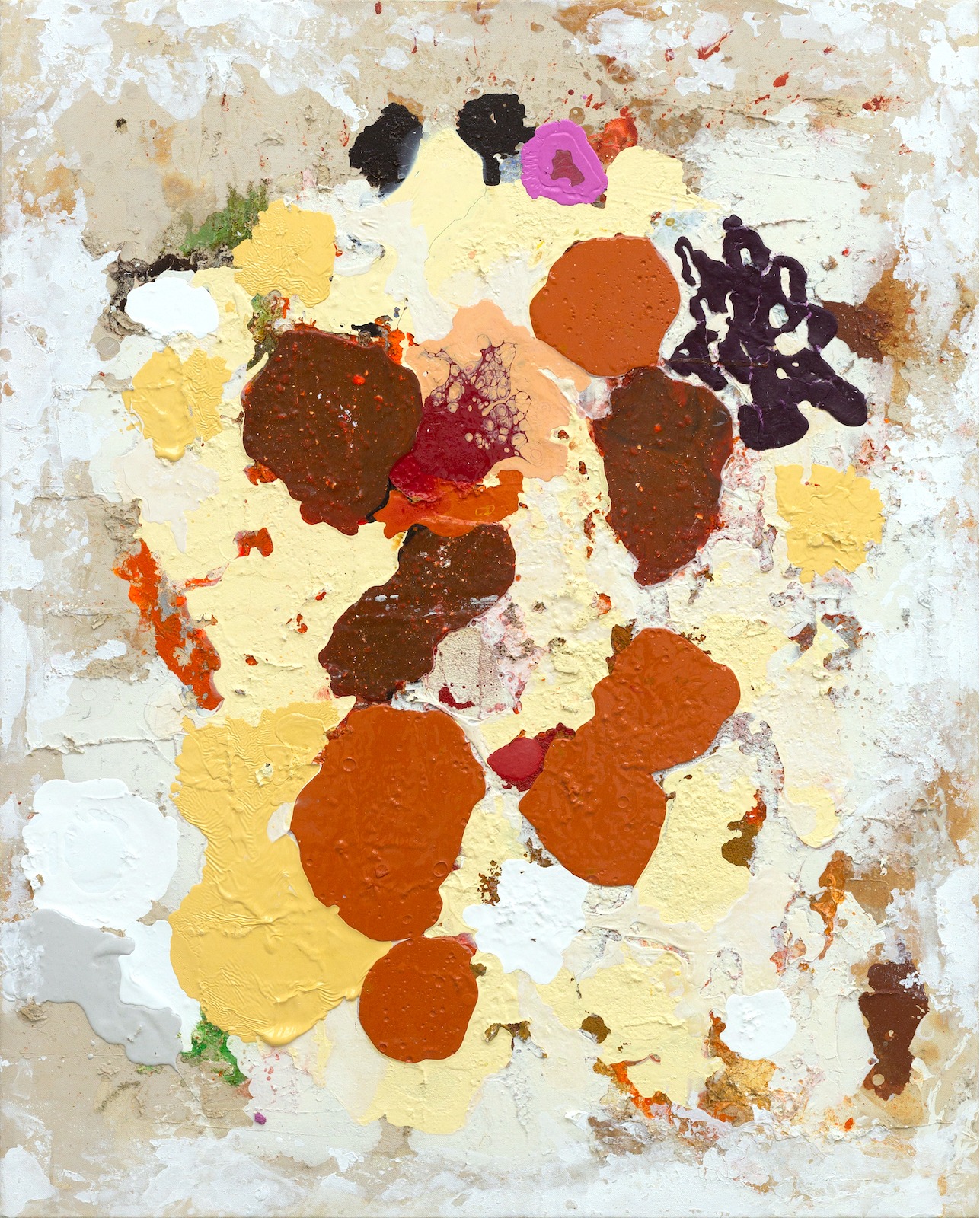
For our year-ender Online Viewing Room, Silverlens proudly presents two iconic series by Chiang Mai-based artist Mit Jai Inn. Junta Monochromes (2016) and Beautiful Futures (2018) were made and shown in Bangkok amidst a backdrop of political drama and student protests—movements that are now more active than ever. In a year of global turbulence, it is good to reflect on histories that give us hope.
Below is an interview between curator Erin Gleeson and the artist, discussing the importance of the work and its timeless relevance.
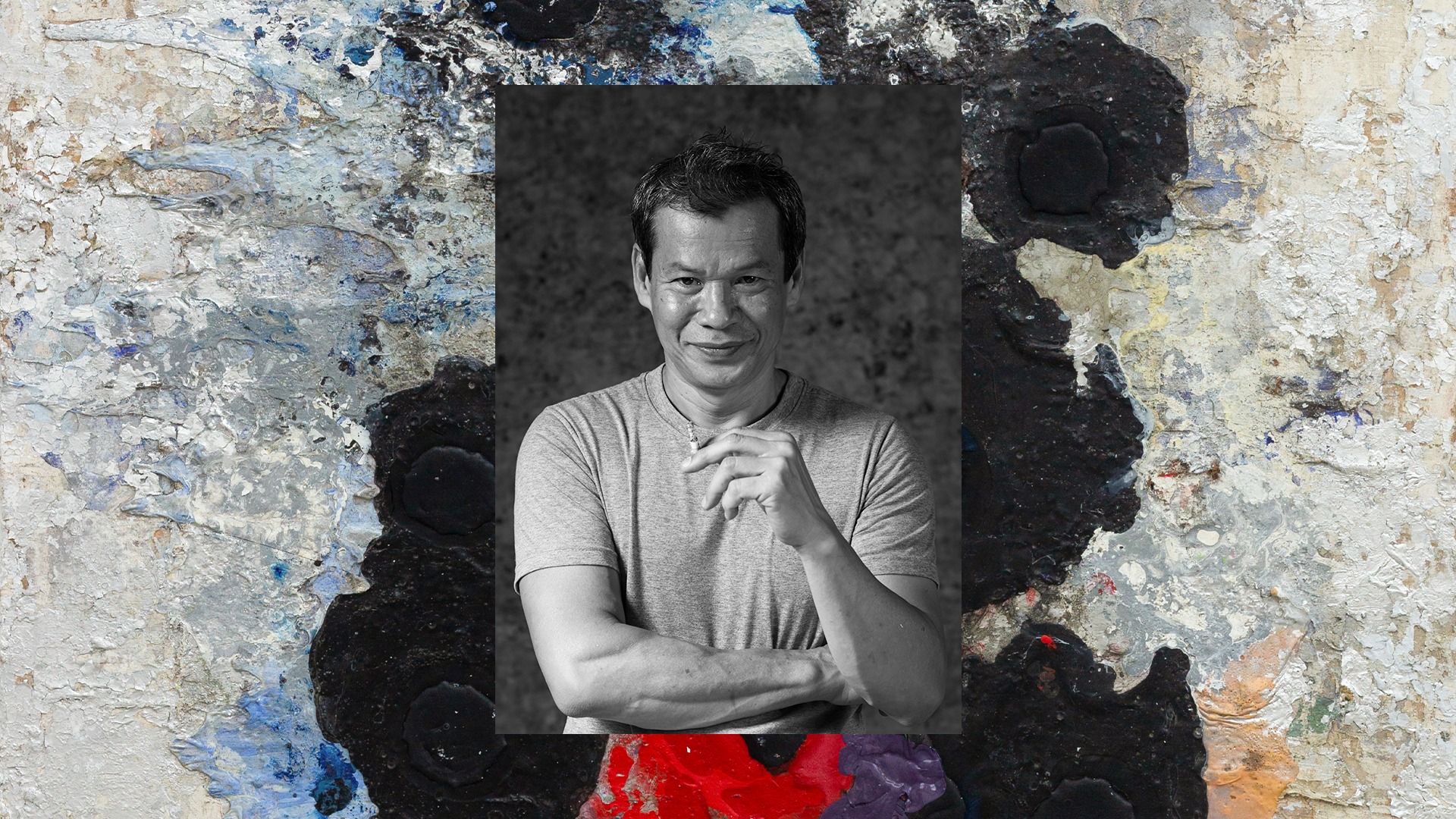
Portrait of Mit Jai Inn with his work, Junta Monochrome 1 (detail), oil on canvas, 165h x 135w cm (2016)
Erin Gleeson (EG): Junta Monochromes brings together works from two of your previous Bangkok-based solo exhibitions, Wett (Ver Gallery), 2016, and Beautiful Futures (H Gallery), 2018. Why is it a meaningful time to revisit and introduce these paintings to new audiences now?
Mit Jai Inn (MJI): December 5 is the annual National Day in Thailand, which is based on the former King’s birthday. Today, millions of people and mostly brave youth are asking for reform to the monarchy. They are continuing the work of previous generations and efforts. It’s been eight-eight years similar to this fighting between the royals and the people. There were eruptions in 2016 and 2018, which is the energy these two series carry. Showing them now is like a dedication to and reminder of the ongoing work.
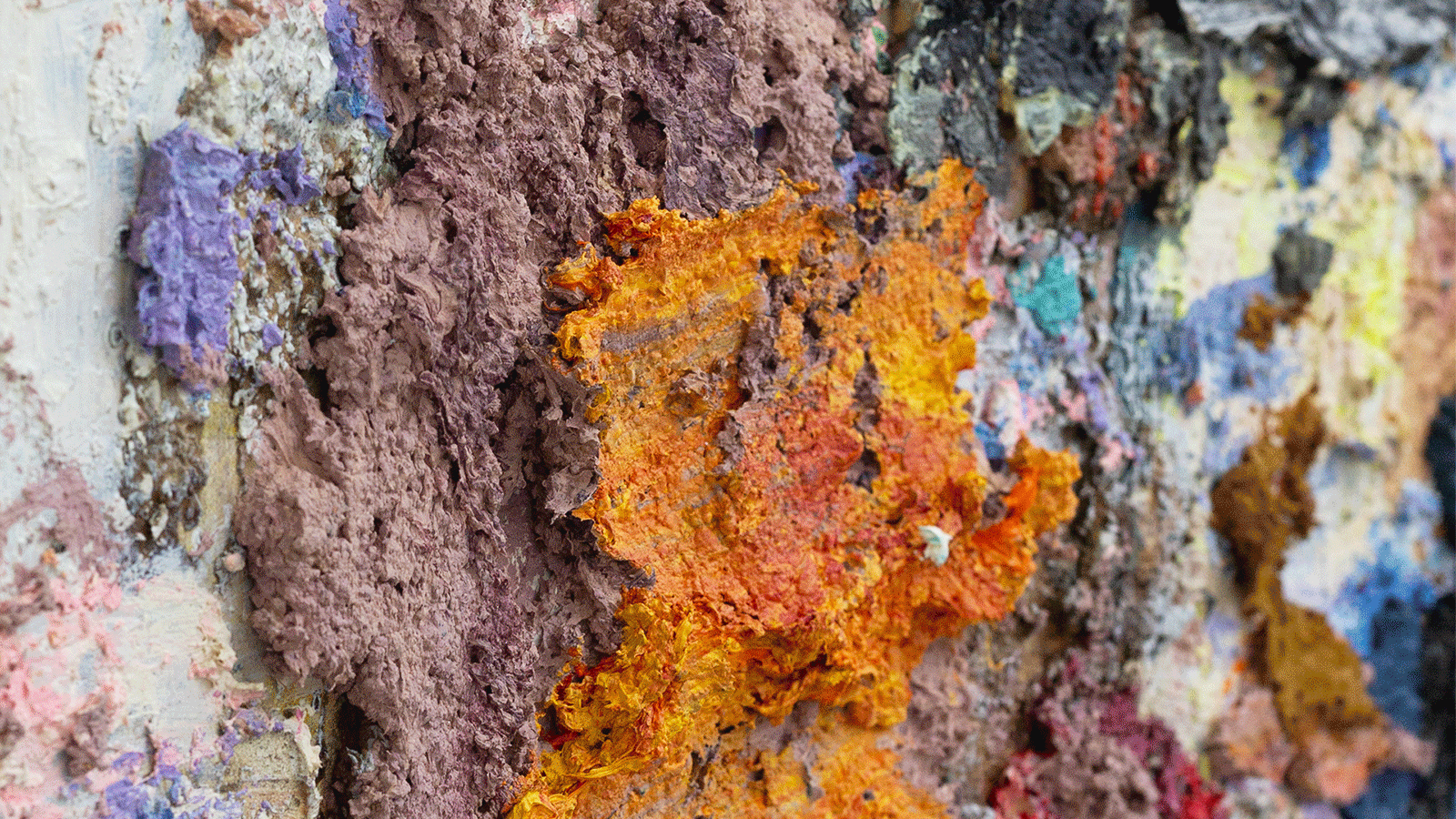
Details: MIT JAI INN, Beautiful Future 23 (2016) & Junta Monochrome 1 to 6 (2016)
EG: Please tell us more about the title and series Junta Monochromes.
MJI: 2016 was the year the new king supported a so called mob-justice, targeting individuals who were accused of going against the criminal code 112 which is the lèse-majesté law. And the junta leader warned no one should upset the mourning of the previous king or risk attack. It was a continuing of the polarization and the opposing groups continued to use monochromatic symbolism; as if everyone should be associated with a color - red shirts or yellow shirts. Gallery Ver was opening their new and current space early that year, and I made a studio in front of the space, creating the works in the exhibition there on site. I painted wall and floor-sized works, cover all the interior space. It was over-the-top: oversized, over-painted, heavy impasto, hyper or over-colored. It was another space counter to the binary or polarized state of the nation. The Junta Monochromes series occupied the galleries' walkways and would-be storage areas - no area was left without paintings! I remember it was around the time Instagram became popular and the young people kept coming to make it their background. It really was a background, like a temple mural, like a theatre set to the dramas of power depicted in the Ramayana stories or the reality then, which is similar now.

Left to right: MIT JAI INN, Junta Monochrome 2, 3, 4, 5, and 6, oil on canvas, 120h x 95w cm each (2016)
EG: You also pursued this all-over nature with the Beautiful Futures in 2016, including carpet-like paintings audiences had to walk on to see the rest of the exhibition, and table-paintings and wall works with still-wet paint mounds. Yet the colors were more somber than in Wett.
MJI: By 2016 there was so much accumulated political drama and even more military control was enforced, so it was hard to sense a future. The colors were speaking to this. And the title was obviously ironic. Along with the ideas around scenography, I also thought about the nomadic and moveable - forms that can be folded and rolled and carried to the next site, the histories of those forms, that canvas has been an architectural material and shelter over time. It was important to continue to make work outside of regulation or expectation including about what painting is or how it should act, and keep challenging uniformity.
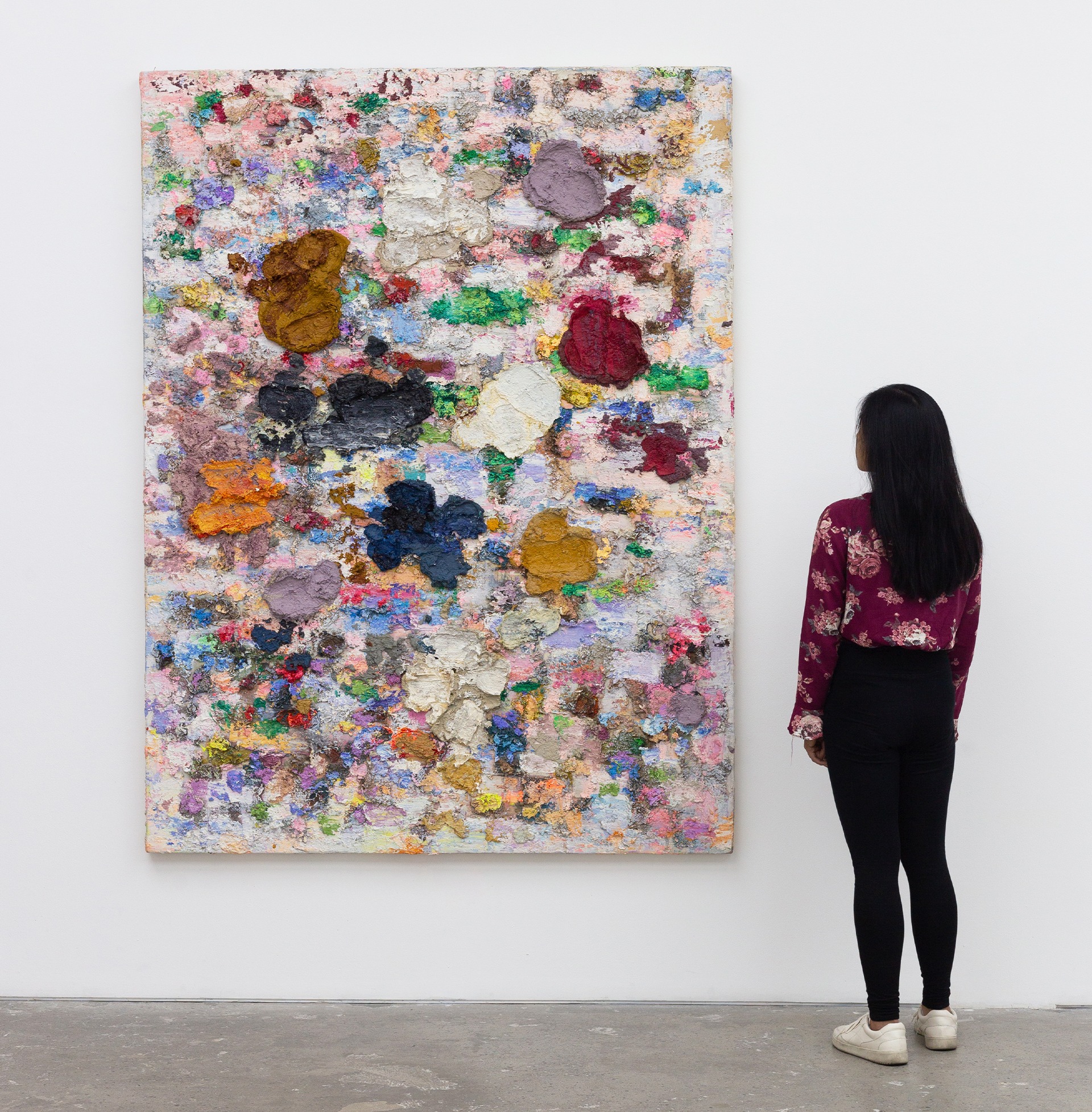
Installation view: MIT JAI INN, Beautiful Future 23, oil on canvas, 200h x 150w cm (2016)

Installation view: MIT JAI INN, Beautiful Future 23, oil on canvas, 200h x 150w cm (2016)
MJI: By 2016 there was so much accumulated political drama and even more military control was enforced, so it was hard to sense a future. The colors were speaking to this. And the title was obviously ironic. Along with the ideas around scenography, I also thought about the nomadic and moveable - forms that can be folded and rolled and carried to the next site, the histories of those forms, that canvas has been an architectural material and shelter over time. It was important to continue to make work outside of regulation or expectation including about what painting is or how it should act, and keep challenging uniformity.
Mit Jai Inn will also be having an exhibition at Rossi and Rossi, Hong Kong, titled Royal Marketplace, from December 5, 2020 onwards.
About
Mit Jai Inn was born in 1960 in Chiang Mai, Thailand, where he lives and works today. Several of his early experiences remain influential to him, including the communal and aesthetic aspects of being raised in an indigenous Yong weaving village, a meditation and political practice drawn from six years as a Theravada Buddhist monk, and the labor and endurance of training two years as a professional Muay Thai boxer. Mit then studied art at Silpakorn University, Bangkok (1982-1986) and continued studies at the University of Applied Arts, Vienna (1987-1992), during which time he worked as assistant to artist Franz West. Returning to Chiang Mai in 1992, Mit initiated social and politically-focused art initiatives, including as co-founder of Chiang Mai Social Installation (1992 -), as well as involvement with Midnight University and The Land Foundation – three non-institutional projects central to Thai contemporary art practice and discourse. In 2015, Mit also founded Cartel Artspace in Bangkok, a gallery offering space to artists reflecting on Thailand and Southeast Asia’s historical and current context. Mit’s recent exhibitions include: Actants, Silverlens, SUNSHOWER: Contemporary Art in Southeast Asia from 1980s to Today, Mori Art Museum and Kaohsiung Museum of Fine Arts; Encounters, Art Basel Hong Kong; and SUPERPOSITION: Equilibrium and Engagement, The 21st Biennale of Sydney.
Erin Gleeson is an independent curator and writer based in Minneapolis and Phnom Penh.
Works
